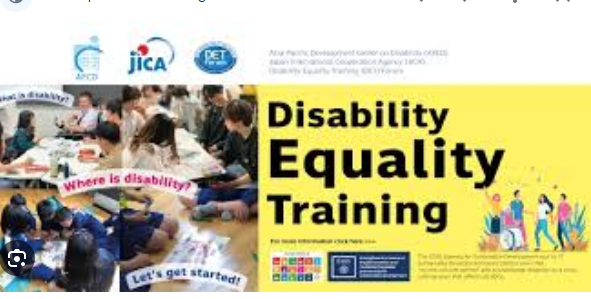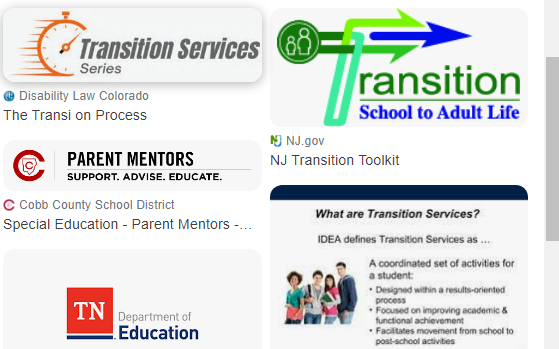Management of Special Education
LECTURE 6: NOTES
6.1 Introduction
This lecture is a continuation of lecture 5. It describes the principles of management that can also be employed in inclusive schools. If the principles are well followed in inclusive schools like in any other organization the work will be implemented harmoniously including fair treatment of all people while objectives of producing good quality students are achieved. Six principles will be discussed in this lecture while the rest will be discussed in lecture seven.
Let us start with te first six including: Division of work, Authority, responsibility and accountability, Discipline, Unity of command, Unity of direction, Centralization and decentralization,
6,2 Division of Work
Division of Work means to divide a given activity or work into small parts so that each part is handled with great ease and efficiency.
This principle states that “every work should be divided into the smallest possible part and each such part is to be performed by an individual person” Instead of assigning the whole work to an individual, it’s better to assign one task to one person.
In an inclusive school, the school head should distribute tasks to specific people according to their specializations. Firstly there should be departments, then each department should have a list of activities to be accomplished and who is supposed to perform each activity.
For example the department of special education, who will be responsible in orientation and mobility to new learners, who will deal with Braille machines, who will be readers to disabled students and the like
Advantages of this principle include:
- Specialization,
- Minimization of wastage,
- Improved efficiency.
Consequences of violation of this principle:
- Overburden on a single employee,
- Conflicting situations,
- Wastage of time and resources,
- Chaos and confusion.
6.3 Authority, Responsibility and Accountability
Authority is the right of a superior to give order to his subordinates. It involves the power to give orders and get it obeyed
Responsibilitymeans obligation for performance. The state of being accountable or answerable for any obligation, in other words it means obligation to complete a job assigned on time and in best way.
This principle suggests that there must be parity between authority and responsibility. These two must go hand in hand. It means that proper authority should be delegated to meet the responsibilities.
A match should be there between these two because of two main reasons:–
.Firstly, if a person is given some responsibility without sufficient authority he can’t perform better,
.Secondly, if there is excess authority being delegated to an individual then the delegated authority will be misused in one way or the other.
Accountability is the responsibility of employees to complete the tasks they are assigned, to perform the duties required by their job as per the expectations, and inform his superior accordingly.
he obligation of an individual or organization to account for its activities, accept responsibility for them, and to disclose the results in a transparent manner. It also includes the responsibility for money or other entrusted property.
The main difference between responsibility and accountability is that responsibility can be shared while accountability cannot. Being accountable not only means being responsible for something but also ultimately being answerable for your actions
This is an important and useful principle of management to schools particularly inclusive schools. The nature of schools indicates that there are several levels of management including the school committee, the school head, the academic, discipline, boarding masters/mistresses, the financial officers and others. Each of these has subordinates. The same applies to the departments. Even student leaders have subordinates under them
Each person should be accountable for his/her work. That is after division of work each staff should clearly understand what is expected from hi/her
For example, subject teachers should clearly be aware of the topics to be covered in an academic year, be responsible for the teaching and learning process as well as being accountable for the students performance at the end of the year
Hence, if adequate authority is not delegated the subordinates cannot fulfill their duties with efficiency and this in turn will hinder the achievement of the teaching and learning process.
Positive impacts of this principle:
No misuse of authority.
- Helps to complete job effectively and efficiently.
- Individuals can be held accountable.
- Systematized and effective achievement of organizational objectives.
Consequences of violation of this principle:
.Misuse of authority.
- Responsibility can’t be discharged effectively.
- No one can be held accountable.
- Conflicts between management and employees.
1.7 Discipline
Discipline means obedience, respect for authority, and observance of established rules.
Henry Fayol has emphasized that a sense of discipline should be present in all employees of the organization including school organization at all level so that the organization can perform and achieve its objectives in the best possible way.
For maintaining discipline in the school head should observe the followings:
.Clear explanation of the rules;
- Effective supervision;
- Reward system on better obedience;
- Possible provision for penalty on non obedience.
The inclusive school manager and other top officers are greatly responsible for maintaining discipline in the school and for this first of all they have to strictly accept the rules and regulations and follow them so that other employees get encouraged to accept and follow them.
Positive impacts of this principle:
.Helpful in achieving school teaching and learning objectives.
- Improved efficiency.
- Friendly relation between school management and employees.
- Better working environment.
- Minimization of wastage;
Consequences of violation of this principle:
.Presence of disorders.
- Confusion and chaos among workers.
- Wastage of time and resources.
- Conflicting situations
1.8 Unity of Command
This involves getting orders/ command from only one supervisor.
Henry Fayol stated that “As soon as two superiors impose their authority over the same person or department, uneasiness makes itself felt. Dual command is a perpetual source of conflict.”
In inclusive schools and any other organization an individual should get orders from a single superior so that he/she does not get confused and can do his duties effectively.
That is the reason there is only one school head, heads of departments, district commissioners, only one president per country and the like
Positive impacts of this principle:
.Prevents double subordination;
- Easy to fix responsibility to an individual;
- Enhances harmonious and friendly relation among the management and the employees; and
- Performance of the employees will increase.
Consequences of violation of this principle:
.Reduces efficiency of subordinates;
- Creates confused situation for the subordinates;
- Subordinates can easily escape from their responsibility and duties;
- Ego clash between managers;
- Overlapping of orders and instructions; and
- Hard to maintain discipline in the organization.
1.7 Centralization Versus Decentralization
When the power to take decision rests with the top management it is called as ‘Centralization’.
When the power to take decision is given to the person performing the job it is called as ‘Decentralization’.
According to Henrt Fayol there should be a proper balance between centralization and decentralization. A school must not be completely centralized or decentralized; there should be a match between the two depending upon the size, nature and location of business.
Thus the school head must remain with the authority to take important decisions of the organization but adequate authority must be delegated to the lower level teachers to take the department level decisions.
Also in doing so, the top management will be free from extra burden of taking and handling each and every affair of the school organization. All the lower level problems will be handled at that level only; this also gives a feeling of superiority to the lower level employees which motivate them to perform better.
Positive impacts of this principle:
- Facilitates proper functioning of the organization;
- Timely completion of work;
- No extra burden on the top management;
- Motivates the lower level employees; and
- Decisions will be taken at the level of action.
Consequences of violation of this principle:
- Over burden on the top management;
- Difficulty in the achievement of organizational objective;
- Delay in action, because the decisions of top management are to be waited.
- Sometimes it creates conflict between the management and the employees; and
- Ego clashes in case of different decision by lower level and top level management. Last modified: Tuesday, 3 January 2017, 10:06 AM
LECTURE 7: NOTES
7.1 Introduction
Dear students this is a continuation of lecture six. The principles to be discussed in this lecture include: Scalar chain, remuneration of personnel, Subordination of individual interest to general interest, equity, stability of tenure of personnel initiatives, Ésprit de corps as well as the span of control
7.2 Scalar Chain (The Chain of Command in an Organization)
This is the chain of superiors or the line of authority form the highest executive to the lowest one for the purpose of communication. It moves from highest to lowest rank in a straight line. This chain specifies the route through which the information is to be communicated to the desired person. For example a teacher seeking permission should channel the letter through the head of the department, teacher on duty, assistant school head and finally the school head. For a staff seeking a transfer, the letter should proceed up to the minister
Information must flow according to this chain to facilitate clear communication of orders of the superiors and feelings of the subordinates. This chain must be strictly followed in the organization.
Due to more clear system of authority and communication, problems can be solved easily, also the accountable person can be held quickly without any confusion and delay. Though this principle is very effective and clear, but it consumes a lot of time. In case of emergency, information will take a lot of time to reach the desired position which may delay the action as well as decision.
Positive impacts of this principle:
- Clear communication of information;
- Better relation among employees;
- Systematic communication in the organization; and
- Faster solution to organizational problems.
Consequences of violation of this principle:
- Bitterness in the relation of employees because of ignoring the close supervisors.
- Improper communication of information;
- Difficulty in finding the responsible person.
7.3 Remuneration of Personnel
Remuneration is money paid for work or a service. Every individual is employed with the main aim of earning his bread and butter. The wages or salary which he earns for his work helps him to fulfill the needs of life. The wages or salary must be in equality with the work done
According to Henry Fayol there must be fair remuneration so that the employee and employer gets satisfaction. The remuneration system must be such which provides for the adequate remuneration to the employees, motivates the employee to perform better, and may ensure safety & security, raise standard of living of the employees.
Positive impacts of this principle:
- It creates good relation between workers and management;
- Employees get motivated;
- It declines the labour turnover rate;
- Employees feel satisfied with their wages and thus contribute their best effort;
- It raises the standard of living of the employees; and
- It develops the society indirectly.
Consequences of violation of this principle:
- Employee’s efficiency decreases;
- Conflict between management and employees;
- Labour turnover rate will be more;
- The immediate result is incomplete work; and
- Hard to achieve organizational objective.
7.4 Subordination of Individual Interest to General Interest
This principle states that the interests of any one employee or group of employees should not take precedence over the interests of the organization as a whole. Any individual’s interest that conflicts with an organizational interest must be subordinated to the interests of the organization.
The manager must try to achieve the organizational objective in such a manner that the individual objectives are also achieved.
All this leads to satisfaction among the employees which helps to maintain a friendly relation among the employees and the management. This also facilitates to increase the efficiency of the employees, and leads to harmony in the organization.
Positive impacts of this principle:
.Achievement of organizational objective;
- Coordination between individual and organizational goal;
- Harmony in the organization;
- Increases employee’s respect for the organization.
Consequences of violation of this principle:
.Difficulty in achievement of organizational goal;
- Conflicting situations in the organization;
- Wastage of efforts, time and resources; and
- Delay in work.
7.5 Equity
According to Henri Fayol, employees must be treated kindly and equally. Employees must be in the right place in the organization to do things right.
It is the applicability of same rules and regulations for all employees in the organization irrespective of their religion, sex, caste, colour, creed, language, nationality, grade, position etc.
all employees of the organization are equal so each and every employee in the organization should be treated with equality and in a just and fair manner. There should not be any discrimination on any ground
The Executive Officer must be fair and unbiased while dealing with his subordinates.
This does not mean that all employees of the organization are equal and must be treated and paid equal salary but It only means equal rules and regulations for every employee without any discrimination.
Positive impacts of this principle:
- Employees feel satisfied.
- Ensures just and fair treatment to all.
- Motivate employees.
- Ensures loyalty of employees towards organization.
- Ensures cordial relationship among employees and management.
Consequences of violation of this principle:
- Dissatisfaction among employees.
- Delay in the achievement of organizational objective.
- Lack of respect towards superiors and work.
- Lack of team spirit.
- Hinders employee-management relationship
7.6 Stability of Tenure of Personnel Initiatives
‘STABILITY’ means no frequent change, termination and transfer of workers. It means that, in organizations like schools whenever an employee is appointed for a job, he/she shouldn’t be removed from that position frequently. The management should ensure that there must be stability in the job and frequent changes and shuffling of position should be avoided.
Positive impacts of this principle:
- Develops sense of belonging towards the organization.
- Improves the efficiency level of employees.
- Minimizes the wastage of resources.
- Employee’s satisfaction.
- Better accountability.
- Saves time.
Consequences of violation of this principle:
- Non-achievement of the organizational objectives
- Lack of employees participation.
- Wastage of resources and time.
- Dissatisfaction
- Adds to cost.
7.7 Ésprit De Corps(Team Spirit)
ESPIRIT DE CORPS’ here means team spirit and team work. This principle emphasizes on team work. ‘UNITY IS STRENGTH’ is the essence of this principle. Fayol suggested that there should be a team spirit in the organization and all the employees must consider themselves as member of the organization.
The inclusive school should be considered as a team and all the employees as its member including normal and disabled students. When the teachers and other employees are considered as member, it develops a feeling of belongingness among them and thus each of them contributes to the achievement the teaching and learning process. This helps the employees to perform their work with greater efficiency.
Positive impacts of this principle:
- Achievement of group goals.
- Development of team spirit.
- High morale of employees.
- Cooperation and coordination in the organisation.
Consequences of violation of this principle:
- Non-achievement of the organisational objectives.
- Conflicting environment in the organisation.
- Lacks maximum participation from employees.
LECTURE 8: NOTES
9.1 Introduction
A policy is a statement of intent that consists of declared objectives that a government seeks to achieve. It also consists of basic principles and guidelines formulated and enforced by the government. Policy documents usually contain several components including: background, definition of terms, a purpose statement, applicability and scope, an effective date and a set of responsibilities.
Hence an inclusive policy contains provisions and guidelines that support the full integration of all students, including those with disabilities, in all educational systems. An inclusive policy is specifically geared towards eliminating discrimination or facilitating diversity.
The international goals of Education for All, or even Universal Primary Education as expressed in Millennium Development Goals, cannot be reached unless more efforts and resources are used for the needs of learners with disabilities
9.2 The International Goals of Education for All Goals
Six internationally agreed education goals aim to meet the learning needs of all children, youth and adults by 2015.
Goal 1
Expanding and improving comprehensive early childhood care and education, especially for the most vulnerable and disadvantaged children.
Goal 2
Ensuring that by 2015 all children, particularly girls, children in difficult circumstances and those belonging to ethnic minorities, have access to, and complete, free and compulsory primary education of good quality.
Goal 3
Ensuring that the learning needs of all young people and adults are met through equitable access to appropriate learning and life-skills programs.
Goal 4
Achieving a 50 per cent improvement in levels of adult literacy by 2015, especially for women, and equitable access to basic and continuing education for all adults.
Goal 5
Eliminating gender disparities in primary and secondary education by 2005, and achieving gender equality in education by 2015, with a focus on ensuring girls’ full and equal access to and achievement in basic education of good quality.
Goal 6
Improving all aspects of the quality of education and ensuring excellence of all so that recognized and measurable learning outcomes are achieved by all, especially in literacy, numeracy and essential life skills.
9.3 The Eight Millennium Development Goals
Goal 1: Eradicate extreme poverty and hunger.
Goal 2: Achieve universal primary education.
Goal 3: Promote gender equality and empower women.
Goal 4: Reduce child mortality rates.
Goal 5: Improve maternal health.
Goal 6: Combat HIV/AIDS, malaria, and other diseases.
According to the goal number 2: To achieve universal primary education
The target was to ensure that, by 2015, children everywhere, boys and girls alike, will be able to complete a full course of primary schooling
For the time being, Burundi, Democratic Republic of the Congo, Ethiopia, Ghana,
Kenya, Malawi, Mozambique, Tanzania and Uganda have abolished school fees, which has led to a surge in enrolment:
According to UNESCO Inclusive Education is a process of addressing and responding to diversity of needs of all learners through increasing participation in learning, cultures and communities, and reducing exclusion within and from education. It also involves changes and modifications in content, approaches, structures and strategies, with a common vision which covers all children of appropriate age range and a conviction that it is the responsibility of the regular system to educate all children (UNESCO, 2008)
. Educational Justification: The requirement of inclusive schools to educate all children together means that schools have to develop ways of teaching that respond to individual differences and thereby benefit all children.
- Social Justification: Inclusive schools are able to change negative attitudes to diversity by educating all children together, thus inclusive schools form the foundation of a just and non-discriminatory society.
- Economic Justification: It is less costly to establish and maintain schools that educate all children together than to set up a complex system of different types of schools which specialize in educating different groups of children (UNESCO, 2008).
Inclusive Education does not pertain only to integrating children and young people with disabilities, or those who are vulnerable, into mainstream schools, or only to ensuring that excluded learners have access to education.
Hence, Inclusive Education means ending segregation or the deliberate exclusion of individuals or groups on the grounds of academic performance, gender, race, culture, religion, lifestyle, health conditions or disability.
It also broadens educational opportunities for all children including those with disabilities and marginalized groups so as to realize their full potential. Marginalized groups are groups like hunters and gatherers, fishing communities, pastoralists’ societies, orphans and street children
• Schools should accommodate all children regardless of their physical, intellectual, social or other condition within their environment,
• Inclusive education often have particular focus on those groups who have been traditionally excluded from educational opportunities, ie children with disabilities and special educational needs.
9.4 UN Convention on the Rights of Persons with Disabilities (2006).
Recognizes the right of persons with disabilities to education in an Inclusive Education system; This agreement urges States to offer education for persons with disabilities without discrimination and on the basis of equal opportunity.
9.5 Main Sources of Exclusion
- Negative social attitude towards these children in schools and surrounding communities.
- Prevalence environmental and communication
- barriers
- Poverty and concomitant challenges
- Lack of knowledge and skills to manage the teaching and learning of the children with special educational needs.
- Lack of awareness of parents and community
9.6 Inclusive Education: Public Policies
The National Strategy on Inclusive Education aims at contributing towards achieving the goals set in the MKUKUTA in line with the Education Sector Development Programme 2008-2017 which puts forward the fundamental principle of inclusion as a key strategy aimed at achieving universal and equitable access, backed up by related teacher training and community publicity.
The overall goal of the National Strategy on Inclusive Education is that:
All children, youth and adults in Tanzania have equitable access to quality education in inclusive settings.
Through the implementation of the National Strategy on Inclusive Education, the following objectives were set
1.Education policies and programs are informed by inclusive values and practical
2.Teaching and learning respond to the diverse needs of learners
3.Educational support is available to all learners
4.Professional capabilities for inclusive education are widened and strengthened
5.Community ownership of and participation in inclusive education is enhanced
The government through different policies including: Education For All, (1978), the Education and Training Policy (1995) and the Primary Education Development Plan (PEDP) ensures access and equity in the education arena. Interventions taken included:
- To support non government institutions practicing specialization approach or regular schools that opt to offer education to children with disabilities through integration approach
- Training of classroom teachers, school inspectors, District education officers and ward education coordinators
- Conduct sensor of children with disabilities for Enrolment
- Create awareness to parents and community
- Conduct several policy and curriculum reforms to take in regard inclusive education.
Challenge as pointed out in the Education Sector Review (2006) that access and equity faces the following challenges
- Access for children from poor families, orphans, children with disabilities (including development and use of Tanzanian sign language [TSL] for the deaf children as well as
- Training and use of TSL teachers and interpreters) and other vulnerable children
Recruiting and retaining teachers for inclusive education
LECTURE 9: NOTES
9.1 Introduction
A policy is a statement of intent that consists of declared objectives that a government seeks to achieve. It also consists of basic principles and guidelines formulated and enforced by the government. Policy documents usually contain several components including:
background, definition of terms, a purpose statement, applicability and scope, an effective date and a set of responsibilities. Hence an inclusive policy contains provisions and guidelines that support the full integration of all students, including those with disabilities, in all educational systems. An inclusive policy is specifically geared towards eliminating discrimination or facilitating diversity.
The international goals of Education for All, or even Universal Primary Education as expressed in Millennium Development Goals, cannot be reached unless more efforts and resources are used for the needs of learners with disabilities
9.2 The International Goals of Education for All Goals
Six internationally agreed education goals aim to meet the learning needs of all children, youth and adults by 2015.
Goal 1
Expanding and improving comprehensive early childhood care and education, especially for the most vulnerable and disadvantaged children.
Goal 2
Ensuring that by 2015 all children, particularly girls, children in difficult circumstances and those belonging to ethnic minorities, have access to, and complete, free and compulsory primary education of good quality.
Goal 3
Ensuring that the learning needs of all young people and adults are met through equitable access to appropriate learning and life-skills programs.
Goal 4
Achieving a 50 per cent improvement in levels of adult literacy by 2015, especially for women, and equitable access to basic and continuing education for all adults.
Goal 5
Eliminating gender disparities in primary and secondary education by 2005, and achieving gender equality in education by 2015, with a focus on ensuring girls’ full and equal access to and achievement in basic education of good quality.
Goal 6
Improving all aspects of the quality of education and ensuring excellence of all so that recognized and measurable learning outcomes are achieved by all, especially in literacy, numeracy and essential life skills.
9.3 The Eight Millennium Development Goals
Goal 1: Eradicate extreme poverty and hunger.
Goal 2: Achieve universal primary education.
Goal 3: Promote gender equality and empower women.
Goal 4: Reduce child mortality rates.
Goal 5: Improve maternal health.
Goal 6: Combat HIV/AIDS, malaria, and other diseases.
According to the goal number 2: To achieve universal primary education
The target was to ensure that, by 2015, children everywhere, boys and girls alike, will be able to complete a full course of primary schooling
For the time being, Burundi, Democratic Republic of the Congo, Ethiopia, Ghana,
Kenya, Malawi, Mozambique, Tanzania and Uganda have abolished school fees, which has led to a surge in enrolment:
According to UNESCO Inclusive Education is a process of addressing and responding to diversity of needs of all learners through increasing participation in learning, cultures and communities, and reducing exclusion within and from education. It also involves changes and modifications in content, approaches, structures and strategies, with a common vision which covers all children of appropriate age range and a conviction that it is the responsibility of the regular system to educate all children (UNESCO, 2008)
Educational Justification: The requirement of inclusive schools to educate all children together means that schools have to develop ways of teaching that respond to individual differences and thereby benefit all children.
Social Justification: Inclusive schools are able to change negative attitudes to diversity by educating all children together, thus inclusive schools form the foundation of a just and non-discriminatory society.
Economic Justification: It is less costly to establish and maintain schools that educate all children together than to set up a complex system of different types of schools which specialize in educating different groups of children (UNESCO, 2008).
Inclusive Education does not pertain only to integrating children and young people with disabilities, or those who are vulnerable, into mainstream schools, or only to ensuring that excluded learners have access to education.
Hence, Inclusive Education means ending segregation or the deliberate exclusion of individuals or groups on the grounds of academic performance, gender, race, culture, religion, lifestyle, health conditions or disability. It also broadens educational opportunities for all children including those with disabilities and marginalized groups so as to realize their full potential. Marginalized groups are groups like hunters and gatherers, fishing communities, pastoralists’ societies, orphans and street children
.Schools should accommodate all children regardless of their physical, intellectual, social or other condition within their environment,
• Inclusive education often have particular focus on those groups who have been traditionally excluded from educational opportunities, ie children with disabilities and special educational needs.
9.4 UN Convention on the Rights of Persons with Disabilities (2006).
Recognizes the right of persons with disabilities to education in an Inclusive Education system;
This agreement urges States to offer education for persons with disabilities without discrimination and on the basis of equal opportunity.
- Negative social attitude towards these children in schools and surrounding communities.
- Prevalence environmental and communication
- barriers
- Poverty and concomitant challenges
- Lack of knowledge and skills to manage the teaching and learning of the children with special educational needs.
- Lack of awareness of parents and community
9.6 Inclusive Education: Public Policies
The National Strategy on Inclusive Education aims at contributing towards achieving the goals set in the MKUKUTA in line with the Education Sector Development Programme 2008-2017 which puts forward the fundamental principle of inclusion as a key strategy aimed at achieving universal and equitable access, backed up by related teacher training and community publicity.
The overall goal of the National Strategy on Inclusive Education is:
All children, youth and adults in Tanzania have equitable access to quality education in inclusive settings.
Through the implementation of the National Strategy on Inclusive Education, the following objectives were set
- Education policies and programmes are informed by inclusive values and practices
2. Teaching and learning respond to the diverse needs of learners
3. Educational support is available to all learners
4. Professional capabilities for inclusive education are widened and strengthened
5. Community ownership of and participation in inclusive education is enhanced
The government through different policies including: Education For All, (1978), the Education and Training Policy (1995) and the Primary Education Development Plan (PEDP) ensures access and equity in the education arena. Interventions taken included:
- To support non government institutions practicing specialization approach or regular schools that opt to offer education to children with disabilities through integration approach
- Training of classroom teachers, school inspectors, District education officers and ward education coordinators
- Conduct sensor of children with disabilities for Enrolment
- Create awareness to parents and community
- Conduct several policy and curriculum reforms to take in regard inclusive education.
Challenge as pointed out in the Education Sector Review (2006) that access and equity faces the following challenges
- Access for children from poor families, orphans, children with disabilities (including development and use of Tanzanian sign language [TSL] for the deaf children as well as
- Training and use of TSL teachers and interpreters) and other vulnerable children
- Recruiting and retaining teachers for inclusive education
Last modified: Friday, 19 January 2018, 3:48 PM

















Leave a Reply